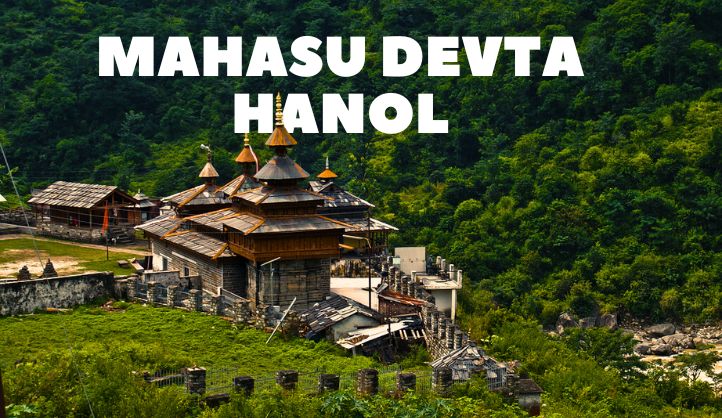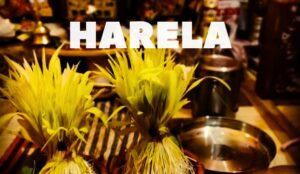Nestled in the serene and picturesque valley of the Tons River in Uttarakhand, the village of Hanol is home to one of the most revered deities in the region, Mahasu Devta. This article explores the history, cultural significance, and enduring legacy of Mahasu Devta, shedding light on the intricate tapestry of faith, folklore, and tradition that binds the people of Hanol to their divine protector.
The Legend of Mahasu Devta
The legend of Mahasu Devta is rooted in the ancient history and mythology of the region. According to local folklore, Mahasu Devta is one of the four brothers who are believed to be incarnations of Lord Shiva. The four brothers – Botha Mahasu, Pavasi Mahasu, Chalda Mahasu, and Vasik Mahasu – are worshipped together, with Botha Mahasu being the primary deity in Hanol.
The story of their arrival in Hanol is a fascinating blend of myth and history. It is said that the Mahasu brothers traveled from their original abode in Kashmir to the Jaunsar-Bawar region, bringing with them divine powers and protection. Their journey was marked by miraculous events, battles with demons, and acts of valor that cemented their status as divine protectors of the land.
How to reach
By Air
The nearest airport to Hanol is the Jolly Grant Airport in Dehradun, approximately 190 kilometers away. From the airport, you can hire a taxi or take a bus to reach Hanol.
By Train
The nearest railway station is Dehradun Railway Station, located about 180 kilometers from Hanol. From the railway station, you can take a taxi, a bus, or a combination of both to reach Hanol.
By Road
By Taxi- The most convenient way to reach Hanol from Dehradun is by hiring a taxi. The journey takes around 6-7 hours, depending on the road conditions.
By Bus- Regular buses operate from Dehradun to nearby towns like Chakrata. From Chakrata, you can hire a local taxi to reach Hanol. The bus journey can take around 6-8 hours.
Map of Mahasu Devta Hanol
The Temple of Mahasu Devta
The Mahasu Devta Temple in Hanol is an architectural marvel that stands as a testament to the region’s rich cultural heritage. Situated at an altitude of approximately 1,500 meters, the temple is a stunning example of the Himachali style of architecture, characterized by intricate woodwork, stone carvings, and slate roofs.
The temple complex is a harmonious blend of natural beauty and spiritual ambiance. The main shrine, dedicated to Botha Mahasu, is adorned with exquisite carvings depicting scenes from Hindu mythology and the life of Mahasu Devta. The sanctum sanctorum houses the idol of Mahasu Devta, which is considered to be a manifestation of Lord Shiva. The idol is a striking figure, embellished with silver and gold ornaments, reflecting the devotion and reverence of the devotees.
Surrounding the main shrine are smaller temples dedicated to the other three Mahasu brothers, creating a sacred quadrangle that is both awe-inspiring and serene. The temple premises also include a spacious courtyard, where various religious and cultural activities take place throughout the year.
The Significance of Mahasu Devta in Local Culture
Mahasu Devta is not just a deity worshipped in temples; he is an integral part of the daily lives of the people in the region. The deity is considered the guardian of the community, protecting them from natural calamities, diseases, and evil spirits. The locals believe that Mahasu Devta’s blessings ensure prosperity, good health, and harmony in their lives.
The cultural significance of Mahasu Devta is evident in the numerous festivals and rituals dedicated to him. The most prominent among these is the annual Mahasu Devta Fair, held in August. This grand celebration attracts devotees from all over the region and beyond, who come to seek blessings and participate in the festivities. The fair features traditional music, dance, and performances that showcase the rich cultural heritage of the region. One of the highlights of the fair is the grand procession, where the idol of Mahasu Devta is carried in a palanquin, accompanied by musicians and dancers, creating a vibrant and joyous atmosphere.
In addition to the annual fair, various other rituals and ceremonies are performed in honor of Mahasu Devta. These include special pujas (prayers) on auspicious occasions, animal sacrifices during harvest festivals, and rites of passage such as weddings and naming ceremonies. The deep-seated belief in the power of Mahasu Devta is evident in the way these rituals are meticulously observed, reflecting the unwavering faith of the community.
The Role of Mahasu Devta in Folk Traditions
The influence of Mahasu Devta extends beyond religious practices and into the realm of folk traditions and oral literature. The deity features prominently in the folklore of the region, with numerous tales and legends celebrating his divine exploits. These stories are passed down through generations, often recited by village elders during communal gatherings and festivals.
One popular legend recounts how Mahasu Devta vanquished a fearsome demon that terrorized the villagers. According to the tale, the demon had been wreaking havoc in the area, destroying crops and livestock. The desperate villagers prayed to Mahasu Devta for help. Answering their prayers, the deity descended from the mountains and engaged in a fierce battle with the demon. With his divine strength and valor, Mahasu Devta defeated the demon, restoring peace and prosperity to the region. This legend, like many others, serves to reinforce the belief in Mahasu Devta’s protective powers and his unwavering commitment to the welfare of his devotees.
Another fascinating aspect of Mahasu Devta’s folk traditions is the practice of oracle consultation, known as “Bagar Devta.” During this ritual, a designated priest or oracle, believed to be possessed by the spirit of Mahasu Devta, offers guidance and solutions to the problems faced by individuals or the community. This practice, though rooted in ancient beliefs, continues to be an important part of the local culture, providing a sense of comfort and assurance to the people.
Modern-Day Relevance of Mahasu Devta
In the contemporary context, the worship of Mahasu Devta continues to thrive, albeit with certain adaptations to modernity. The temple has become a significant pilgrimage site, attracting not only local devotees but also tourists and spiritual seekers from across the country. The influx of visitors has brought about economic benefits to the region, leading to the development of infrastructure and amenities.
Despite these changes, the essence of Mahasu Devta’s worship remains deeply rooted in tradition. The local community continues to uphold its age-old customs and rituals, ensuring that the legacy of Mahasu Devta is preserved for future generations. The temple administration has also embraced modern technology to enhance the experience of devotees, such as online darshan (virtual viewing of the deity) and digital platforms for donations and information dissemination.
Some nearby places to explore
Chakrata
Located around 43 kilometers from Hanol, Chakrata is a charming hill station known for its scenic beauty and tranquil environment. It offers lush green landscapes, dense forests, and panoramic views of the Himalayas.
- Tiger Falls: One of the highest waterfalls in Uttarakhand, Tiger Falls is a must-visit attraction near Chakrata. It is a secluded spot, perfect for a peaceful retreat amidst nature.
- Deoban: A Deoban dense forest area that provides breathtaking views of the surrounding hills and valleys. It is an ideal spot for bird watching and nature walks.
- Chilmiri Neck: The Chilmiri Neck is highest peak in Chakrata, offering stunning sunset views and a chance to observe various bird species.
Mori
About 23 kilometers from Hanol, Mori is a picturesque village situated on the banks of the Tons River. It is known for its serene environment and adventure activities.
- Tons River: The river is perfect for white-water rafting, providing an exhilarating experience for adventure enthusiasts.
- Jarmola: A nearby forest area ideal for camping and trekking, offering scenic trails and a chance to experience the region’s natural beauty up close.
Lakhamandal
Approximately 67 kilometers from Hanol, Lakhamandal is an ancient village with significant archaeological and historical importance.
- Lakhamandal Temple: This ancient temple complex is dedicated to Lord Shiva and is believed to date back to the Mahabharata era. It features intricate stone carvings and various statues of Hindu deities.
- Caves: The area surrounding Lakhamandal is dotted with numerous caves that are believed to have been used by the Pandavas during their exile.
Dehradun
Dehradun, the capital city of Uttarakhand, is about 180 kilometers from Hanol and offers a blend of natural beauty, cultural heritage, and modern amenities.
- Robber’s Cave (Gucchu Pani): A natural cave formation with a river flowing through it, providing a unique experience of walking through water inside the cave.
- Sahastradhara: Known for its therapeutic sulfur springs and scenic beauty, Sahastradhara is a popular spot for relaxation and picnics.
- Forest Research Institute (FRI): A FRI colonial-era institute with a beautiful campus, housing museums dedicated to forestry and botany.
Har ki Dun Valley
Situated around 76 kilometers from Hanol, Har ki Dun Valley is a stunning trekking destination in the Garhwal Himalayas.
- Trekking: The trek to Har ki Dun is known for its breathtaking views of snow-capped peaks, alpine meadows, and lush forests. It is an ideal destination for nature lovers and adventure seekers.
- Camping: The valley offers picturesque camping sites along the banks of the Tons River, allowing visitors to immerse themselves in the pristine natural surroundings.
Purola
Around 42 kilometers from Hanol, Purola is a small town offering scenic beauty and a peaceful environment.
- Duryodhana Temple: Dedicated to Duryodhana Temple from the Mahabharata, this temple reflects the unique cultural beliefs of the local people.
- Kanasar: A Kanasar nearby village known for its dense deodar forests and serene environment, ideal for nature walks and picnics.
Conclusion
Mahasu Devta of Hanol is much more than a religious figure; he embodies the cultural, spiritual, and environmental ethos of the region. The deity’s enduring legacy is a testament to the deep-rooted faith and resilience of the people, who continue to find strength and solace in their divine protector. As the region navigates the challenges of modernity, the timeless teachings of Mahasu Devta offer valuable insights into living a life of balance, harmony, and reverence for both the divine and the natural world.
FAQs About Mahasu Devta Temple in Hanol
What is Mahasu Devta Temple?
Mahasu Devta Temple is a revered Hindu shrine dedicated to Mahasu Devta, considered an incarnation of Lord Shiva. It is located in Hanol village in the Dehradun district of Uttarakhand.
Where is Hanol located?
Hanol is located in the Jaunsar-Bawar region of the Dehradun district in Uttarakhand, approximately 180 kilometers from Dehradun city.
How do I reach Mahasu Devta Temple in Hanol?
- By Air: The nearest airport is Jolly Grant Airport in Dehradun, around 190 kilometers away.
- By Train: The nearest railway station is Dehradun Railway Station, about 180 kilometers away.
- By Road: You can hire a taxi or take a bus from Dehradun to Chakrata, and from there, continue to Hanol.
What is the best time to visit Mahasu Devta Temple?
The best time to visit is from April to June and September to November when the weather is pleasant and the roads are more accessible.
What are the main festivals celebrated at Mahasu Devta Temple?
The most significant festival is the annual Mahasu Devta Fair held in August. Other important occasions include various Hindu festivals and local celebrations dedicated to the deity.
Are there accommodation options available near Mahasu Devta Temple?
Yes, there are a few guest houses and small hotels in and around Hanol. Additionally, you can find more options in nearby towns like Chakrata.





